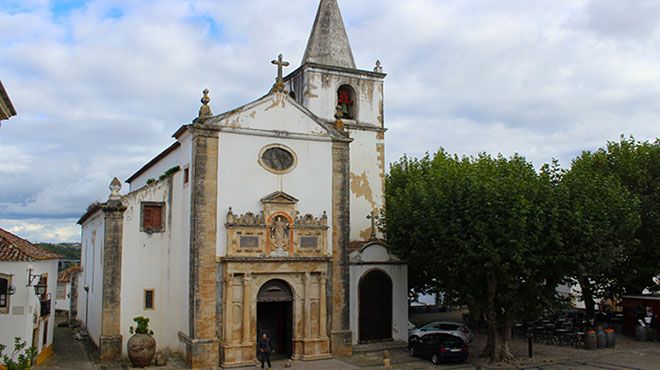
The Rua Direita leads to the Praça de Santa Maria, dominated by the church with its white bell tower and a lovely Renaissance portal. At the time when the Moors were the lords of the region, this was the site on which they built their mosque. When D. Afonso Henriques captured Óbidos in 1148, a Christian church replaced the mosque.
The church we see today dates from the sixteenth century. In the interior, the walls, covered from top to bottom with eighteenth-century azulejos, and the painted wooden ceiling produce a fine decorative effect. It is also worth having a look at the Renaissance tomb of D. João de Noronha, who was alcaide or commander of Óbidos in the sixteenth century; this is a masterpiece of Renaissance tomb sculpture, attributed to João de Ruão. In particular, take time to appreciate the charm of the paintings by Josefa de Óbidos (1634-1684), where the sacred and profane mingle in an atmosphere of gentle sensuality and mysticism, such as in the retable representing the Mystic Marriage of St. Catherine, to be found in the sacristy. Much of the work of this remarkable painter is kept in museums, especially the museum in Óbidos. The artist is buried in the church of S. Pedro, in the square of the same name.
In this church, on 15th August 1441, Infante D. Afonso (later D. Afonso V of Portugal) married his cousin D. Isabel. He was ten and she was eight.
In the square by the church the stone pillory is decorated with a fishing net. D. Leonor, wife of D. João II, wanted to pay homage in this way to the fishermen who picked up the body of her son D. Afonso, who died after a riding accident by the River Tagus, in a fishing net.